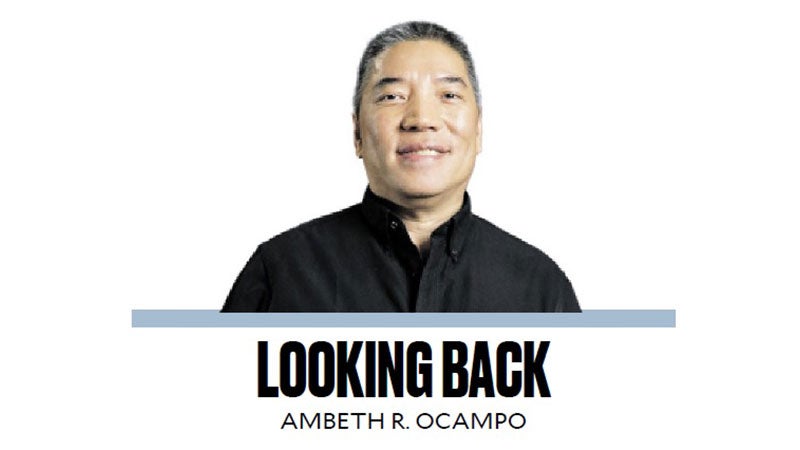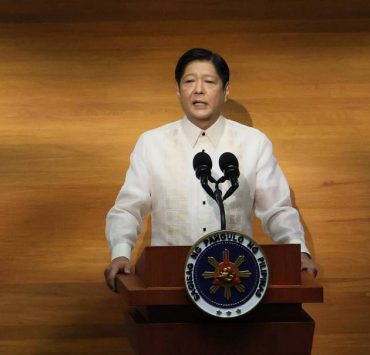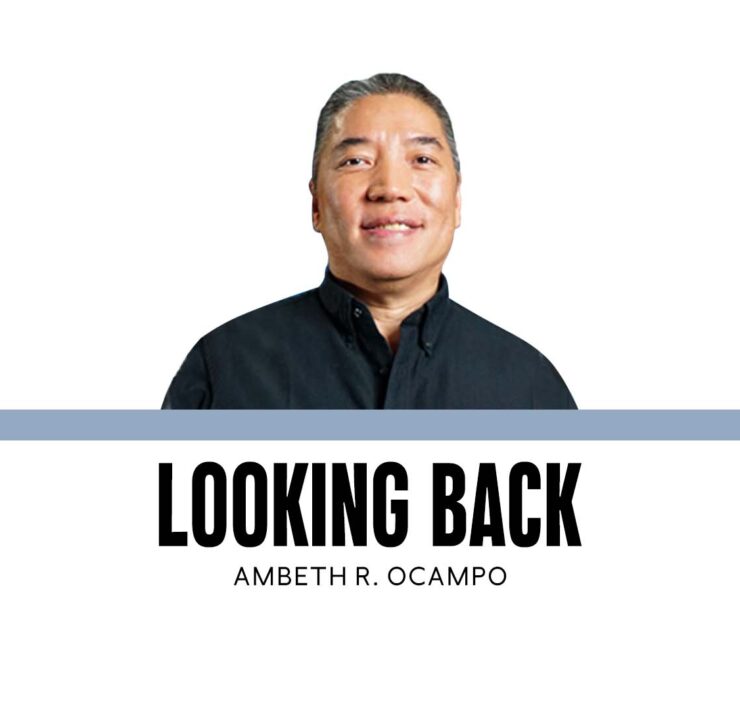DepEd cheat sheet

A friend recently sent me a 63-item “cheat sheet” posted on “DepEd Teachers’ Channel” on Meta that covers material for Araling Panlipunan, the strange creature known in English as “Social Studies.”
From this list, I learned that the first Filipino bread was pan de regla. I thought it was pan de sal, or maybe if we enlarge our definition of bread should it be puto or rice cake? It also placed Galicano Apacible as “co-founder of the Katipunan.” That’s news to me. Elementary fact-checking could improve the list. The “first Filipino alphabet,” the pre-Spanish syllabary, is “Baybayin.” It is not “alibata,” which are the first three letters in Arabic: alif, baa, taa.
The person who compiled the list is obviously a subscriber or reader of the Manila Bulletin, said to be “the oldest existing newspaper in the Philippines since 1900.” The Manila Times is older, its first issue is dated Oct. 11, 1898.
Another “first” on the list is the “Doctrina Cristiana” said to be the first book “written” in the Philippines. There were two books published in Manila in 1593, both of them Roman Catholic catechism, one in Chinese, the other in Tagalog. What makes the latter Doctrina more valuable is that the Tagalog translations of the Spanish catechism and prayers are rendered in both the Roman alphabet and Baybayin. Doctrina is the Rosetta Stone that allowed us to decipher Baybayin.
Blame for this error lies not with teachers but with the National Historical Institute.
Since 1972, the government agency responsible for history has been distributing facsimiles of the Doctrina under the title “The First Book Printed in the Philippines. Manila, 1593.” Don’t judge a book by its cover because on the first page, in the first paragraph of the introduction by Carlos Quirino, he clearly said that there were two books printed or published in 1593. So the Doctrina is not the first, but one of the first books printed in the Philippines.
If we want to split hairs further, we can also question the concept of the “book.” We are using here a Western definition of a book: “a written or printed work consisting of pages glued, or sewn together along one side and bound in covers.”
Our earliest known writing is etched on a copper plate and incised on the neck of an earthenware jar. What about ambahan from Mindoro written on leaves or bamboo? Don’t get me wrong, I want to go beyond nitpicking or poking fun at the cheat sheet.
We have to move forward and use the list as a teaching moment not just for teachers but students as well. A cheat sheet is a reviewer for a quiz bee that rewards memorization and rote learning. What the cheat sheet should develop is critical thinking. It should encourage the student to ask questions, interrogate the list, and validate individual items by research. Processing the facts we teach students and teachers to argue with facts, not opinions. To argue from facts, not by authority.
Rafael Palma is listed as the “First University of the Philippines president.” Simple fact-checking will reveal that Palma was the fourth UP president (1925-1933), the second Filipino after Ignacio Villamor (1915-1921).
Juan Luna, “Painter of the Spoliarium,” was great but can he be considered the “Greatest Filipino painter” of all time? What was new to me was that Luna was supposed to be the “Greatest journalist of the Propaganda.” Isn’t that a tie between Graciano Lopez Jaena (“Greatest Filipino orator of the Propaganda Movement”) and Marcelo H. del Pilar who is missing from the list? What about Mariano Ponce (managing editor of La Solidaridad)? Or even Jose Rizal who also contributed to the Propaganda Movement? Perhaps Juan Luna was confused with his younger brother Antonio who also wrote for the reformist paper La Solidaridad but can’t be known as the “Greatest journalist of the Propaganda.”
Andres Bonifacio has two entries: “Great plebeian” and “Father of the Katipunan.” Rizal was only listed as “Founder of La Liga Filipina” but his fiancée Leonor Rivera was included, as well as his elder brother Paciano for being the “Model for Filosofong Tasyo.” Dimasalang and Laong Laan, Rizal’s pseudonyms are referenced. Rizal is said to have written the folk tale “Monkey and the Turtle.” Rizal retold the story in a series of sketches and in an English translation for a folklore journal. He is also said to be the author of “To my fellow children” (“Sa Aking Mga Kababata”), which has been proven to be false. Emilio Jacinto is said to be the “Brains of the Katipunan” and Apolinario Mabini the “Brains of the Revolution.”
Who made up these titles and why? Gregoria de Jesus, widow of Bonifacio, in the list as “Lakambini (Muse) of the Katipunan” would object. In 1928, she declared: “Mabini should not be called the Brains of the Revolution because he did nothing, did not serve in the revolution.” In Filipino she wrote: “Kung baga sa isang handaan ay dumating siyang luto na ang ulam, nakahanda ang dulang at siya’y kasamang mga huling nagsidulog upang tumikim at makisalo sa masarap na luto” (Like a party, he arrived when the food was cooked and prepared on the table, he arrived with other latecomers to taste and partake of the delicious feast).
History is subversive because it teaches us to ask questions and assert ourselves. Things don’t always have to be the way they are.
aocampo@ateneo.edu
Ambeth is a Public Historian whose research covers 19th century Philippines: its art, culture, and the people who figure in the birth of the nation. Professor and former Chair, Department of History, Ateneo de Manila University, he writes a widely-read editorial page column for the Philippine Daily Inquirer, and has published over 30 books—the most recent being: Martial Law: Looking Back 15 (Anvil, 2021) and Yaman: History and Heritage in Philippine Money (Bangko Sentral ng Pilipinas, 2021).

















